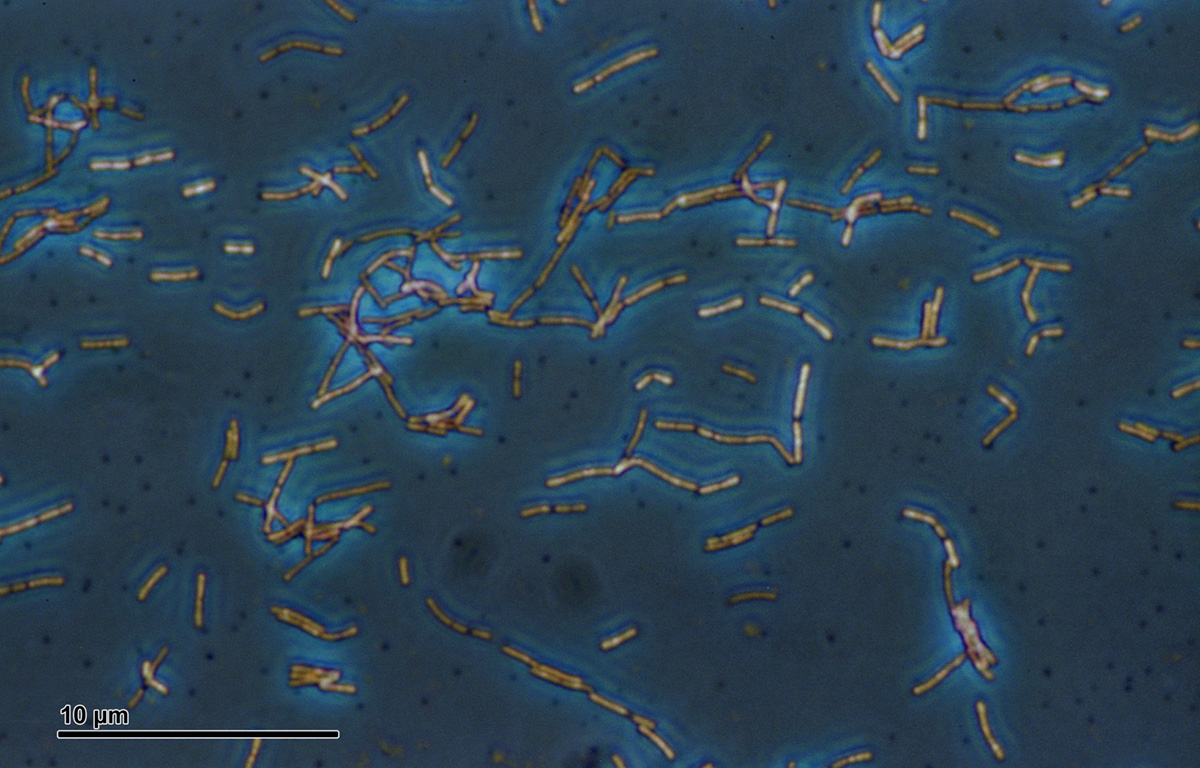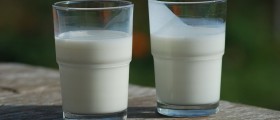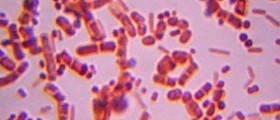What is Lactobacillus Acidophilus?
Lactobacillus acidophilus is a species in the genus Lactobacillus. The name of this bacterium means “acid-loving milk-bacterium”. Lactobacillus acidophilus has the ability to ferment sugars into lactic acid and it grows readily at lower pH values, below pH 5.0, with an optimum growth temperature of 30 °C (86 °F). This bacterium is a friendly bacterium that occurs naturally in human and animal gastrointestinal tract, mouth and vagina and some of the strains may have probiotic features.
Lactobacillus acidophilus is very much important for the optimum health because it produces vitamin K, lactase, and anti-microbial substances such as acidolin, acidolphilin, lactocidin, and bacteriocin. A strong flora of lactobacillus acidophilus is needed to prevent overgrowth of dangerous bacteria in human intestines, and prevention of many diseases.
- L. acidophilus is a short (2–10??m), Gram-positive bacillus that grows optimally from 37 to 42°C and can develop at temperatures as high as 45°C. It reaches its highest growth with a pH between 5.5 and 6.0, and its growth ceases at pH 4.0. L. acidophilus is an obligate homofermentative organism that ferments carbohydrates to produce lactic acid, and is one of the least tolerant LABs to oxygen.
- Even though L. acidophilus has been isolated from multiple origins associated with humans, Claesson’s characterization established that its environmental space is the gastrointestinal tract. Studies show that dietary ingestion is the main factor in acquiring human carriage of L. acidophilus.
- L. acidophilus is one of the main commercial species of LAB available in products that include milk, yogurt, infant formulas, and dietary supplements with probiotic effects. Its slow growth in milk means that most fermentation in dairy products is achieved with an initial culture of yogurt (e.g. L. delbrueckii subspecies bulgaricus and S. thermophilus), and L. acidophilus is subsequently added for its probiotic value.
- The strain L. acidophilus LB constitutes the strains Lactobacillus fermentum and L. delbrueckii. Both strains were isolated by the National Collection of Cultures of Microorganisms of the Pasteur Institute, where they are registered with reference number MA65/4E, and characterized in Germany by the Deutsche Sammelung von Mikroorganismen und Cell Culturen. In additionally, the Faculty of Pharmacy of the National Institute for Health and Medical Research confirmed that its pharmacological activity is sustained.
- A review of 57 clinical trials showed that the administration of probiotics and/or synbiotic organisms in immunocompromised adults (human immunodeficiency virus infection, critical, surgical, autoimmune disease patients) is safe. In particular, the safety of heat-treated and lyophilized L. acidophilus LB has been demonstrated in two controlled clinical trials, with no adverse events being reported.
Benefits of Lactobacillus Acidophilus
The term "probiotic" is used to describe organisms that are used medicinally, including bacteria such as lactobacillus acidophilus. The very term “probiotic” is derived from Latin language and means “for life”. Probiotic strains of this bacterium are commercially used in dairy products in the production of acidophilus-type yogurt. Probiotics are also sold as food supplements. For example, lactobacillus acidophilus supplements are used to restore the natural bacterial balance in the body. Eating yogurt enriched with lactobacillus acidophilus may be similarly beneficial.
Probiotics are often suggested as supplements when someone undergoes treatment with antibiotics. If taken orally, antibiotics kill all of the bacteria, good ones as well as the hazardous ones, so that the balance between good and bad bacteria in the intestines can be upset. The aim of probiotics is to help restore the beneficial bacterial balance in the body.
Lactobacillus acidophilus can inhibit the growth of candida albicans, the fungus associated with "thrush" in the mouth, esophagus or vagina. There is a good evidence that lactobacillus acidophilus can be used as a treatment for vaginal candidiasis.
Lactobacillus is used for treating and preventing diarrhea, including infectious types such as rotaviral diarrhea in children and traveler's diarrhea. It is also used to prevent and treat diarrhea associated with using antibiotics. It is also used in treatment of general digestion problems; irritable bowel syndrome (IBS); Crohn's disease; inflammation of the colon; and infection with Helicobacter pylori.
Side Effects
Ingestion of lactobacillus acidophilus is considered safe but certain portions of population are discouraged from taking this bacterium as a supplement. Pregnant women or people with intestinal damage, weakened immune system or overgrowth of intestinal bacteria, should avoid taking lactobacillus acidophilus supplements. As any other food supplement, lactobacillus acidophilus is not been approved by FDA for safety, effectiveness, or purity.


















Your thoughts on this
Loading...